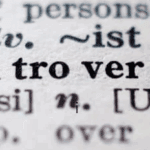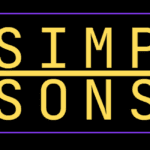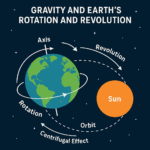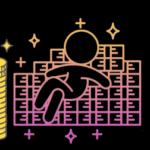
Understanding the Placebo Effect: How Belief Can Shape Reality

Introduction
The placebo effect is one of the most fascinating and well-documented phenomena in medical science. It occurs when a person experiences a real improvement in their condition after receiving a treatment that is inactive or inert, such as a sugar pill or saline injection. This effect highlights the powerful connection between the mind and body, demonstrating how belief and expectations can influence physical health. In this post, we’ll delve into the science behind the placebo effect, explore real-world examples, and analyze the statistics that reveal just how significant this effect can be.
What Is the Placebo Effect?
The placebo effect occurs when a patient experiences a therapeutic benefit after receiving a treatment that has no active ingredients. This effect is not just about “feeling better”—it can lead to measurable physiological changes. The placebo effect underscores the brain’s role in physical health, where belief in the efficacy of a treatment can trigger actual biological responses.
How Does the Placebo Effect Work?
The exact mechanisms of the placebo effect are complex and not fully understood, but several factors contribute to its occurrence:
- Expectancy: If a person expects a treatment to work, their brain may release chemicals like endorphins and dopamine, which can reduce pain and promote healing.
- Conditioning: Repeatedly experiencing relief from a particular treatment can condition the body to respond positively even when the treatment is inactive.
- Patient-Doctor Relationship: The confidence and authority of a healthcare provider can enhance the placebo effect. A reassuring, empathetic doctor can boost a patient’s expectations and, in turn, the efficacy of a placebo.
Real-World Examples of the Placebo Effect
- Pain Management: A 2011 study published in the Journal of Neuroscience found that patients with chronic pain who believed they were receiving an active painkiller experienced a reduction in pain, even when the treatment was a placebo. Brain imaging showed that the placebo reduced activity in pain-related areas of the brain.
- Parkinson’s Disease: A study published in Nature Neuroscience in 2001 demonstrated that Parkinson’s patients who believed they were receiving an active treatment showed increased dopamine production in the brain, despite only receiving a placebo. This resulted in improved motor function.
- Depression: The placebo effect is particularly strong in antidepressant trials. A meta-analysis published in PLOS Medicine in 2008 revealed that up to 75% of the effectiveness of antidepressants could be attributed to the placebo effect, highlighting the profound impact of patient expectations on mental health treatments.
Statistical Insights into the Placebo Effect
- A review of over 200 clinical trials found that placebos were 55-60% as effective as active medications in treating various conditions, including pain, depression, and anxiety.
- A 2015 study published in The Lancet analyzed data from 4,000 patients across 12 trials of migraine treatments. The study found that placebos reduced migraine symptoms in 35% of patients, compared to 50% for the actual drug, underscoring the significant impact of belief in treatment.
- The placebo effect is not limited to subjective symptoms. In a study involving patients with irritable bowel syndrome (IBS), published in The New England Journal of Medicine in 2010, patients who knowingly took a placebo reported significant symptom relief, suggesting that even when patients know a treatment is inactive, the ritual and expectation of healing can still trigger a beneficial response.
Ethical Considerations and the Nocebo Effect
While the placebo effect is powerful, it raises ethical questions, particularly in clinical trials and patient care. Deceiving patients by giving them placebos without their knowledge can undermine trust in the medical profession. However, some studies have explored “open-label” placebos, where patients are informed they are receiving a placebo, yet still experience benefits.
The flip side of the placebo effect is the nocebo effect, where negative expectations can lead to worse outcomes. For example, if a patient is warned about potential side effects, they may be more likely to experience those side effects, even if they are receiving a placebo.
Conclusion
The placebo effect is a compelling reminder of the mind’s power over the body. It challenges our understanding of medicine and highlights the importance of belief and expectation in healing. While there are ethical considerations, the placebo effect remains a crucial area of research, offering insights into the intricate connections between psychology and physiology. As we continue to explore this phenomenon, it may lead to more effective and holistic approaches to treatment that harness the power of the mind to promote health and well-being.
Hello, I am Aman (: Full Time Traveler :) At the age of 41, in April 2023, fueled by my love for travel and the determination not to remain fixed like a tree, I embarked on a bold journey. Having dedicated 17 years to a corporate job, I chose to transition from a full-time employee to a full-time traveler, driven by the desire to break free from the routine and constraints of a conventional life. Along the way, I not only explored the wonders of travel but also uncovered the transformative power of financial freedom. I realized how it could liberate me to lead a life teeming with adventure, purpose, and fulfillment. Through my blogs, I am passionately sharing my story, aiming to inspire and provide valuable guidance to those, like me, who aspire to weave travel into a life overflowing with limitless possibilities.






















Post Comment
You must be logged in to post a comment.